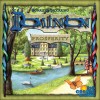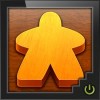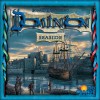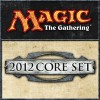

MrNonRespondo
gamer level 4
1513 xp
1513 xp
followers
46
46
Use my invite URL to register (this will give me kudos)
https://boardgaming.com/register/?invited_by=mrnonrespondo
profile badges

...
...
...
recent achievements

Tinkerer
Submit 5 house rules (a type of game tip) and get 20 positive ratings.
Submit 5 house rules (a type of game tip) and get 20 positive ratings.

Gamer - Level 4
Earn Gamer XP to level up!
Earn Gamer XP to level up!

Strategist
Submit 5 game strategies (a type of game tip) and get 20 positive ratings.
Submit 5 game strategies (a type of game tip) and get 20 positive ratings.

Sophomore
Earn Professor XP to level up by completing Professor Quests!
Earn Professor XP to level up by completing Professor Quests!
Player Stats
Critic (lvl 2)
505 xp
505 xp
Explorer (lvl 0)
70 xp
70 xp
Professor (lvl 2)
456 xp
456 xp
Reporter (lvl 1)
140 xp
140 xp
About Me
Computer programmer, lover of games (digital and analog), part time game designer.
I believe we're living in a golden age of board games. So many people getting interested in independent games and the games themselves are phenomenal.






































Formula D
First of all, I’d like to thank BoardGaming.com for this game; I was one of July’s contest winners! These guys have done an awesome job with this site and to be giving away games on top of that is almost too awesome.
In this game you control a racecar traveling around a track by rolling dice. By shifting up gears, you can roll larger dice to go faster, however, you must remain slow and cautions near corners to avoid damaging or destroying your car. So the game is a constant balance between speed and control and wild luck.
The first thing you’ll notice is that it’s essentially 2 (or more) games in one. There are 2 boards, two types of cars, and many optional rules that add complexity and flavor to the game. In fact, the basic game is really just sophisticated dice-rolling while the advanced rules incorporate strategy / role playing elements. This makes it very replayable and fun for a wide audience.
I played this game with a mixed group of 6 people from casual to hardcore. Many of them rolled their eyes as I read the sometimes tedious basic rules, however, we all managed to have a pretty good time. It was a good social experience and even downright exciting at times. Although, at the end of the game, the general consensus was that it might actually be more fun with the added complexity of the advanced rules.
The components were a mixed bag. The gear shift and dice felt really fun to use. Nearly everything is double-sided maximizing the variety you can get out of one set. However, the split board was awkward and didn’t always lay flat. The car pieces were very small making it difficult to remember which car was yours and to place it on the right tile.